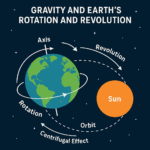
Understanding the Science Behind Weather Forecasting

Weather forecasting is a complex and fascinating science that blends advanced technology, meteorological expertise, and data analysis. The ability of the meteorological department to predict the weather, including parameters such as temperature, humidity, rainfall, UV index, and more, is crucial for our daily lives. In this blog post, we’ll delve into how weather predictions are made, the parameters involved, and the role of modern technology in ensuring accuracy.
1. Understanding Weather Prediction: The Basics
Weather forecasting is the process of predicting future weather conditions based on the analysis of atmospheric data. Meteorologists rely on a vast network of observations from the ground, sea, and air, along with data from satellites and weather balloons. This data is fed into computer models that simulate the atmosphere’s behavior, helping meteorologists predict weather patterns days, weeks, or even months in advance.
2. Key Parameters in Weather Forecasting
Several key parameters are essential in predicting the weather. Let’s take a closer look at these:
Temperature
Temperature prediction is fundamental to weather forecasting. It is measured using thermometers placed at various locations and altitudes. The data collected helps meteorologists predict daily highs and lows, heatwaves, and cold fronts.
- Measurement Tools: Thermometers, weather balloons, satellites
- Typical Accuracy: Forecasts for the next 24 hours are usually accurate within 1-2°C. Longer-range forecasts have a margin of error that increases over time.
Humidity
Humidity, the amount of water vapor in the air, plays a crucial role in weather patterns. High humidity levels can lead to cloud formation and precipitation, while low humidity can result in dry conditions.
- Measurement Tools: Hygrometers, satellites, weather balloons
- Typical Accuracy: Humidity forecasts are highly accurate for the immediate future, with slight deviations in longer-range predictions.
Rainfall
Rainfall prediction involves estimating the amount and intensity of precipitation. This is crucial for agriculture, flood management, and water resource planning.
- Measurement Tools: Rain gauges, radar, satellites
- Typical Accuracy: Short-term rainfall forecasts (up to 24 hours) are often precise, though predicting the exact amount can be challenging.
Wind Speed and Direction
Wind plays a critical role in weather systems, affecting everything from temperature changes to storm development. Meteorologists measure wind speed and direction at various altitudes to predict weather patterns.
- Measurement Tools: Anemometers, weather balloons, satellites
- Typical Accuracy: Wind forecasts are generally accurate within 10-15% for short-term predictions.
UV Index
The UV index measures the strength of ultraviolet radiation from the sun. This parameter is essential for public health, as high UV levels can lead to skin damage.
- Measurement Tools: Spectrophotometers, satellites
- Typical Accuracy: UV index predictions are typically accurate within one unit for short-term forecasts.
3. The Role of Technology in Weather Forecasting
Modern weather forecasting relies heavily on advanced technology. Here are some of the key tools and techniques used by meteorologists:
Supercomputers and Numerical Weather Prediction (NWP) Models
Supercomputers play a vital role in processing vast amounts of data. Numerical Weather Prediction (NWP) models use mathematical equations to simulate the atmosphere’s behavior, allowing meteorologists to predict future weather conditions.
- Example: The European Centre for Medium-Range Weather Forecasts (ECMWF) operates one of the world’s most powerful weather forecasting supercomputers, capable of performing quadrillions of calculations per second.
Satellites and Remote Sensing
Satellites provide a bird’s-eye view of the Earth, capturing data on cloud cover, temperature, humidity, and more. Remote sensing technology allows for continuous monitoring of the atmosphere, oceans, and land surfaces.
- Example: The GOES-R series of satellites provides high-resolution imagery and atmospheric measurements, crucial for weather forecasting and severe storm monitoring.
Radar Systems
Radar systems are used to detect precipitation, its intensity, and movement. Doppler radar, for example, can measure the velocity of rain droplets, helping meteorologists predict storms and tornadoes.
- Example: The NEXRAD radar network in the United States provides real-time data on precipitation, aiding in accurate weather forecasts and severe weather warnings.
Weather Balloons
Weather balloons are launched twice daily from various locations worldwide. They carry instruments that measure temperature, humidity, pressure, and wind at different altitudes, providing a vertical profile of the atmosphere.
- Example: The Global Weather Observing System (GWOS) uses data from thousands of weather balloons to improve forecast accuracy.
4. The Accuracy of Weather Forecasts
While weather forecasts have become increasingly accurate, predicting the weather is still not an exact science. Short-term forecasts (up to 24 hours) are generally very reliable, with accuracy rates often exceeding 90%. However, as the forecast period extends, the accuracy decreases due to the chaotic nature of the atmosphere.
- 1-2 Day Forecasts: Accuracy typically ranges from 85-95%.
- 3-5 Day Forecasts: Accuracy ranges from 70-85%.
- 7-Day Forecasts: Accuracy drops to around 50-70%.
- Long-Term Forecasts (10+ days): Predictions become increasingly uncertain, with accuracy often falling below 50%.
5. Challenges in Weather Forecasting
Despite technological advancements, several challenges remain in weather forecasting:
- Data Gaps: In some regions, particularly over oceans and remote areas, there are fewer data collection points, leading to potential inaccuracies.
- Atmospheric Complexity: The atmosphere is a dynamic and complex system, and even small changes can lead to significant variations in weather patterns.
- Climate Change: Climate change is altering weather patterns, making it more challenging to predict extreme events like hurricanes, droughts, and heatwaves.
6. Conclusion
The ability of the meteorological department to predict the weather is a testament to the remarkable advances in science and technology. By analyzing key parameters like temperature, humidity, rainfall, and UV index, meteorologists can provide accurate and timely forecasts that are crucial for our safety and well-being.
Whether you’re planning a weekend getaway, managing agricultural activities, or preparing for a natural disaster, reliable weather forecasts are an essential tool. As technology continues to evolve, we can expect even greater accuracy and understanding of the forces that shape our weather.
Hello, I am Aman (: Full Time Traveler :) At the age of 41, in April 2023, fueled by my love for travel and the determination not to remain fixed like a tree, I embarked on a bold journey. Having dedicated 17 years to a corporate job, I chose to transition from a full-time employee to a full-time traveler, driven by the desire to break free from the routine and constraints of a conventional life. Along the way, I not only explored the wonders of travel but also uncovered the transformative power of financial freedom. I realized how it could liberate me to lead a life teeming with adventure, purpose, and fulfillment. Through my blogs, I am passionately sharing my story, aiming to inspire and provide valuable guidance to those, like me, who aspire to weave travel into a life overflowing with limitless possibilities.





















Post Comment
You must be logged in to post a comment.